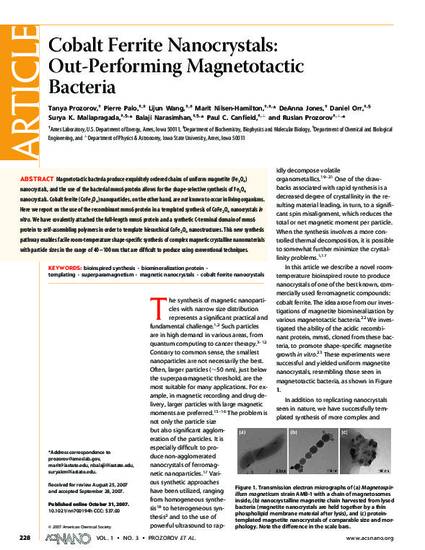
Magnetotactic bacteria produce exquisitely ordered chains of uniform magnetite (Fe3O4) nanocrystals, and the use of the bacterial mms6 protein allows for the shape-selective synthesis of Fe 3O4 nanocrystals. Cobalt ferrite (CoFe2O 4) nanoparticles, on the other hand, are not known to occur in living organisms. Here we report on the use of the recombinant mms6 protein in a templated synthesis of CoFe2O4 nanocrystals in vitro. We have covalently attached the full-length mms6 protein and a synthetic C-terminal domain of mms6 protein to self-assembling polymers in order to template hierarchical CoFe2O4 nanostructures. This new synthesis pathway enables facile room-temperature shape-specific synthesis of complex magnetic crystalline nanomaterials with particle sizes in the range of 40 -100 nm that are difficult to produce using conventional techniques.
Available at: http://works.bepress.com/marit-nilsen-hamilton/12/

Reprinted (adapted) with permission from ACS Nano 1 (2007), pp.228-233. Copyright 2007 American Chemical Society.